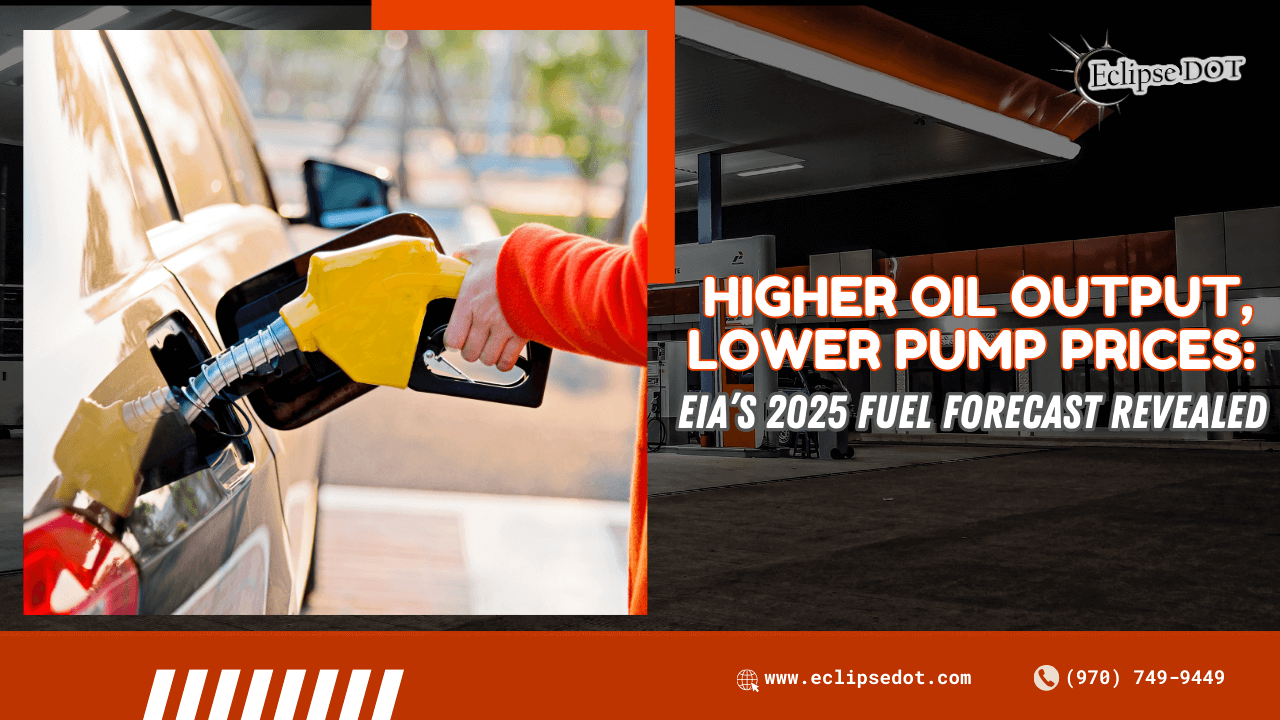Brace yourself, folks, because the Energy Information Administration (EIA) just dropped their 2025 fuel forecast, and it’s a doozy. Think of it as a roadmap to the wild, unpredictable world of oil production and pump prices. The good news? Gasoline users are in for some financial relief. The bad news? Diesel users might want to stock up on patience because it’s going to be a slow climb down.
If you’re ready for a whirlwind journey through barrels, pumps, and the occasional geopolitical curveball, let’s dive in.
Oil Production: Pumping Like There’s No Tomorrow
The U.S. oil industry isn’t slowing down. In 2024, we hit a record 13.2 million barrels per day. And if you thought that was impressive, 2025 is set to one-up it with 13.55 million barrels daily. By 2026, we’ll be at 13.6 million barrels per day. That’s more oil than we’d know what to do with—except we definitely know what to do with it: drive, ship, and transport all the things.
Globally, the story is the same. OPEC+ and other producers are cautiously increasing their output, trying to strike the delicate balance between “just enough” and “too much.” Oversupply could crash prices faster than you can say “oil glut,” and no one wants that (except maybe commuters rooting for $2 gas).
Gasoline Prices: Let’s Celebrate, Shall We?
Here’s a reason to smile next time you pull up to the pump: retail gasoline prices are expected to drop steadily over the next two years. The EIA projects we’ll go from $3.30 per gallon in 2024 to $3.20 in 2025, and by 2026, we’re hitting $3 flat. That’s right—gas prices flirting with the $2 range is back on the table.
Why? It’s all thanks to falling crude oil prices. Brent crude, the international benchmark, is expected to average $74 per barrel in 2025 before dipping to $66 in 2026. Those numbers haven’t been this low since 2021. If you’re running on gasoline, consider this your golden era of savings.
Diesel Prices: The Slow and Steady Downhill Slog
Diesel, on the other hand, is like that one friend who’s always late. You know it’ll show up eventually, but not without testing your patience. While gasoline prices are sliding down like a kid at a waterpark, diesel’s taking the long road.
The EIA predicts diesel prices will rise slightly toward the end of 2025 before starting their gradual decline. The keyword here is “gradual.” It’s the kind of pace that makes fleet managers groan and truck drivers mutter under their breath.
Mike Kucharski, VP of JKC Trucking, hit the nail on the head: “For truckers to feel real relief, diesel needs to drop below $3 and stay there. But when it does drop, it’s always slow. And that lag is what kills us.”
If you’re in the trucking or logistics industry, you already know the pain of waiting for diesel prices to stabilize. The EIA estimates it could take six to nine months before we see any meaningful consistency. Until then, it’s a game of hurry up and wait.
The Sanctions Wild Card
Now let’s talk geopolitics—the unpredictable guest at every oil party. On January 10, the U.S. slapped new sanctions on Russia’s oil sector, and that’s got everyone wondering what happens next.
Here are a few possibilities:
- OPEC steps up production: They could try to offset the reduced Russian supply, stabilizing prices in the process.
- Russian oil finds new buyers: Because let’s be real, there’s always someone willing to deal.
- Sanctions tighten the market: If supplies get squeezed, prices could spike higher than the EIA anticipates.
As economist Matt Muenster explains, “Sanctions could shift the market slightly—or flip it on its head. It’s anyone’s guess.” In short, keep your eyes peeled because this story is far from over.
Carbon Emissions: A Short Spike, Then Downhill
With all this oil production, what happens to emissions? The EIA predicts a slight increase in U.S. carbon emissions in 2025, thanks to higher consumption of petroleum products and coal. But don’t fret—the forecast shows emissions declining in 2026, thanks to better vehicle fuel efficiency and a shift away from natural gas for electricity generation.
So while the environment takes a small hit in the short term, the long game looks greener. It’s a reminder that progress isn’t always a straight line—it’s more of a zigzag.
What Does This Mean for You?
Here’s the TL;DR:
- Gasoline users: Enjoy the ride. Lower pump prices mean more money in your pocket, whether you’re planning a cross-country road trip or just treating yourself to that extra-large coffee.
- Diesel users: It’s going to be a waiting game. Budget wisely and hang tight because relief is coming—it’s just not arriving as fast as you’d like.
- Everyone else: Stay informed. The energy market is like your favorite drama series—full of twists, surprises, and cliffhangers.
Whether you’re managing a fleet or just trying to get through your morning commute, the key takeaway is this: the fuel market never sleeps, and neither should your strategies for navigating it.
The Bottom Line
The EIA’s 2025 forecast is a mixed bag of hope and frustration. Gasoline prices are headed down, diesel prices are dragging their feet, and geopolitical factors are keeping everyone on their toes. It’s a reminder that while we can predict trends, the world of oil and energy is never set in stone.
So, whether you’re driving a sedan, a semi, or a fuel tanker, one thing’s for sure: the road ahead is always full of surprises. Stay flexible, stay informed, and maybe treat yourself to an extra snack—because no matter how high or low prices go, snacks make everything better.
Gain exclusive access to our CDL & DOT Compliance articles with a trial at DOTDocs.com. And don’t forget to claim your FREE micro audit at THE ECLIPSE DOT MICRO AUDIT. Ready for seamless operations? Discover the difference today!


